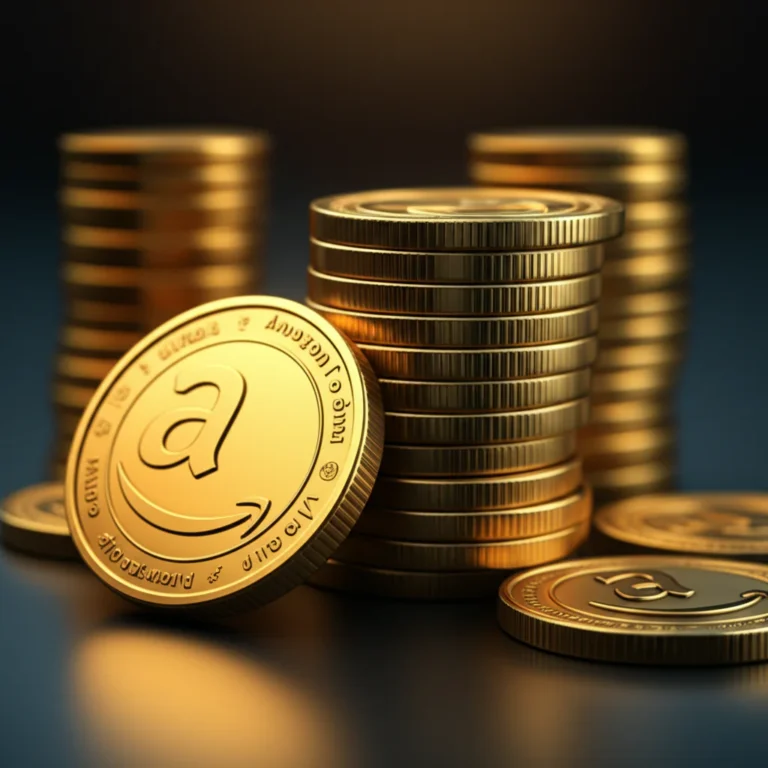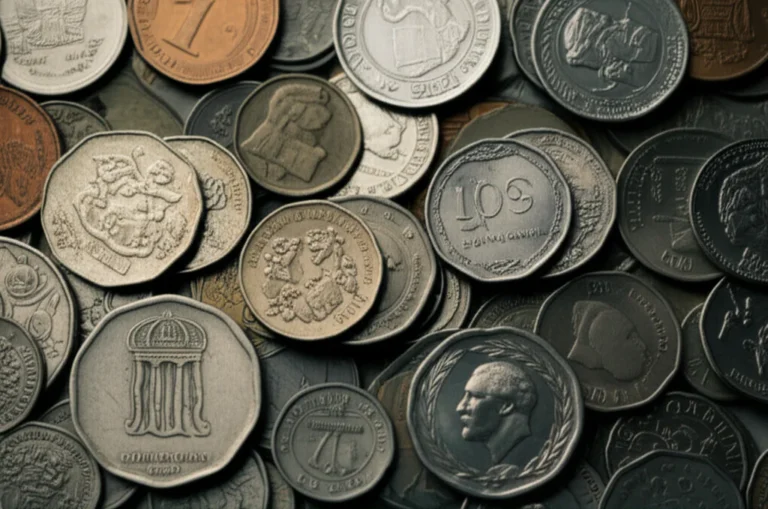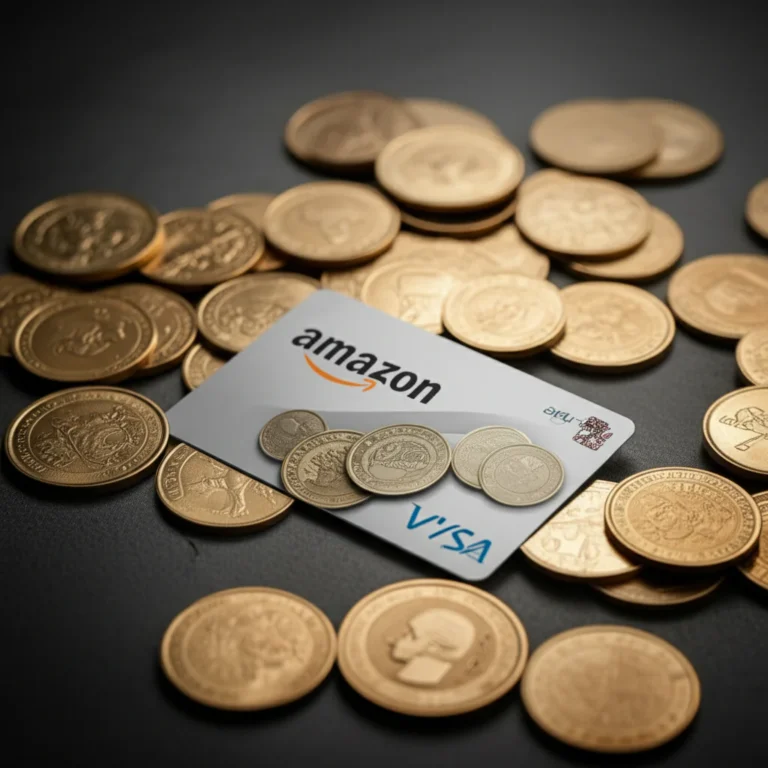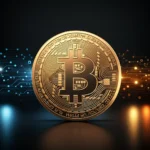Support our educational content for free when you purchase through links on our site. Learn more
Unlock Your Coin’s Hidden Value! 💰
Have you ever found an old coin tucked away in a drawer or jar, wondering about its worth? Perhaps it’s a shiny quarter from your childhood, or a tarnished silver dollar passed down through generations. This comprehensive guide from Coin Value™ will help you uncover the secrets behind your coins’ value, revealing how factors like condition, rarity, and metal content all play a crucial role. We’ll explore everything from the humble penny to rare, valuable collectibles, equipping you with the knowledge and resources to assess your own collection. Did you know that a seemingly ordinary Lincoln cent could be worth hundreds of dollars depending on its condition and year? Let’s unlock the potential of your coins together!
Key Takeaways:
- Coin condition is paramount: A coin’s condition significantly impacts its value. A pristine, uncirculated coin will be worth far more than a well-worn one.
- Rarity is key: Low mintage numbers, unique errors, or historical significance can dramatically increase a coin’s worth.
- Metal content matters: Coins made from precious metals like silver or gold hold inherent value beyond their face value.
- Utilize online resources: Use online resources and price guides to get a preliminary idea of your coin’s value, but remember that professional grading is often necessary for accurate valuation.
- Professional grading adds legitimacy: For valuable coins, consider getting them professionally graded by reputable services like PCGS or NGC. This adds legitimacy and can significantly increase their value.
👉 Shop PCGS on: PCGS on Amazon | PCGS Official Website
👉 Shop NGC on: NGC on Amazon | NGC Official Website
Table of Contents
A Brief History of Coin Collecting and Valuation
Understanding Coin Values: Factors Influencing Worth
- Penny Value: More Than Just a Cent!
- Nickel Value: The Underestimated Silver Five-Cents
- Dime Value: Small Size, Big Potential
- Quarter Value: State Quarters and Beyond
- Half Dollar Value: The Forgotten Fifty Cents
- Dollar Coin Value: From Sacagawea to Presidential Dollars
- Silver Dollar Value: A Collector’s Dream?
- Rare Coin Value: The Holy Grail of Coin Collecting
Uncovering Hidden Gems: How to Determine Your Coin’s Value
Top Online Resources for Checking Coin Values
Why Use Professional Coin Grading Services?
Protecting Your Collection: Storage and Handling Tips
Investing in Coins: A Smart Financial Move?
The Thrill of the Hunt: Where to Find Valuable Coins
Welcome, fellow coin enthusiasts! At Coin Value™, we’re passionate about helping you unlock the secrets hidden within your coin collections. Whether you’re a seasoned numismatist or just starting your journey, we’ve got you covered. Let’s dive into some quick facts to get you started!
- Condition is King: A coin’s condition significantly impacts its value. A pristine, uncirculated coin will fetch far more than a well-worn, circulated one. Learn more about coin grading on the American Numismatic Association (ANA) website.
- Rarity Matters: Rare coins are valuable! Low mintage numbers, unique errors, or historical significance can dramatically increase a coin’s worth. Check out this article on rare coin collecting for inspiration.
- Metal Content Counts: Coins made from precious metals like silver or gold hold inherent value beyond their face value. The current market price of these metals influences their worth. For more information on precious metal prices, consult Kitco.
- Know Your Resources: Utilize online resources and price guides to get a preliminary idea of your coin’s value. However, remember that these are estimates; professional grading is often necessary for accurate valuation. We’ll explore some great online resources later in this article.
- Professional Grading: For valuable coins, consider getting them professionally graded by reputable services like PCGS or NGC. This adds legitimacy and can significantly increase their value.
A Brief History of Coin Collecting and Valuation
Coin collecting, or numismatics, boasts a rich history! From ancient civilizations treasuring rare coins as status symbols to modern-day investors seeking financial returns, the pursuit of coins has captivated people for millennia. Early coin collecting often focused on historical significance and rarity. The development of standardized grading systems in the 20th century brought more objectivity to coin valuation. Today, the field is vibrant, with online resources and professional grading services making it more accessible than ever. Want to delve deeper into the history of numismatics? Check out the American Numismatic Society’s website.
Understanding Coin Values: Factors Influencing Worth
Several factors intertwine to determine a coin’s value. It’s not just about the face value printed on it! Think of it like a complex equation – each element plays a crucial role. Let’s break down the key components:
- Condition: As mentioned earlier, a coin’s condition is paramount. Professional grading services use standardized scales (like the Sheldon Scale) to assess wear, damage, and overall preservation. A coin in Mint State (MS) condition is highly sought after.
- Rarity: The scarcity of a particular coin significantly impacts its value. Low mintage numbers, unique errors (like a misaligned die strike), or specific mint marks can all contribute to rarity.
- Demand: The level of demand from collectors and investors plays a crucial role. Popular coins or those with historical significance often command higher prices.
- Metal Content: The intrinsic value of the metal used in the coin (e.g., silver, gold) influences its overall worth. Fluctuations in precious metal prices directly affect the value of coins containing these metals.
- Historical Significance: Coins associated with important historical events or figures often hold greater value due to their historical context.
While a penny’s face value is minimal, certain pennies can be surprisingly valuable! We’re not talking about your everyday Lincoln cents. Key dates, rare mint marks, and errors can transform a humble penny into a collector’s item. For example, the 1909-S VDB Lincoln cent, with its low mintage, is a highly sought-after coin. Learn more about identifying valuable pennies on our Coin Identification page.
Nickels, often overlooked, can also hold significant value. Buffalo nickels, particularly key dates, are popular among collectors. The composition of older nickels (containing more silver) further enhances their worth. Explore the world of valuable nickels on our Coin Values page.
Don’t underestimate the dime! Mercury dimes and Roosevelt dimes, especially those in high-grade condition and with key dates, can be quite valuable. Check out our guide on dime identification to learn more.
The State Quarters program introduced a wave of collectible quarters. While most are common, some rare errors or mint marks can significantly increase their value. Discover more about valuable quarters on our Coin Collecting page.
Half dollars, often forgotten in change, can hold surprising value. Walking Liberty half dollars and Kennedy half dollars are popular among collectors. Key dates and high-grade condition are essential factors in determining their worth.
Dollar coins, while not as common as other denominations, can still be valuable. Sacagawea dollars and Presidential dollars, particularly in uncirculated condition, are sought after by collectors.
Morgan dollars and Peace dollars are iconic silver dollars that are highly prized by collectors. Their silver content and historical significance contribute to their value. The condition and rarity of specific dates and mint marks are crucial factors.
The pursuit of rare coins is the ultimate challenge for many collectors. These coins, often with extremely low mintages or unique errors, can command extraordinary values. The thrill of the hunt and the potential for significant financial returns make rare coin collecting a captivating hobby. Learn more about rare coins on our Coin Collecting page.
Uncovering Hidden Gems: How to Determine Your Coin’s Value
Determining a coin’s value can be a fascinating process! It requires a keen eye for detail and a good understanding of numismatic principles. Here’s a step-by-step guide:
- Identify the Coin: Determine the coin’s country of origin, denomination, year of minting, and any mint marks.
- Assess the Condition: Carefully examine the coin for wear, scratches, blemishes, and other imperfections. Use a coin grading guide to determine its condition.
- Research: Use online resources, price guides, and auction results to research similar coins.
- Consider Rarity: Investigate the mintage numbers and any known errors or varieties associated with the coin.
- Professional Grading (Optional): For valuable coins, professional grading adds legitimacy and can significantly increase their value.
Top Online Resources for Checking Coin Values
Several online resources can help you estimate your coin’s value. However, remember that these are estimates, and professional grading is often necessary for accurate valuation. Here are some reputable options:
- PCGS Price Guide: https://www.pcgs.com/
- NGC Price Guide: https://www.ngccoin.com/price-guide/united-states/
- Greysheet: https://www.greysheet.com/coin-prices
Why Use Professional Coin Grading Services?
Professional coin grading services, such as PCGS and NGC, offer several advantages:
- Objectivity: They provide unbiased assessments of a coin’s condition using standardized grading scales.
- Legitimacy: A professional grading label adds credibility and increases a coin’s value.
- Protection: Encapsulation protects the coin from damage and environmental factors.
- Increased Value: Professionally graded coins often sell for higher prices than ungraded coins.
Protecting Your Collection: Storage and Handling Tips
Proper storage and handling are crucial for preserving your coin collection. Here are some tips:
- Use Protective Holders: Store coins in protective flips, holders, or albums to prevent scratches and damage.
- Avoid Handling: Minimize handling coins to prevent fingerprints and wear.
- Control the Environment: Store coins in a cool, dry place away from direct sunlight and extreme temperatures.
- Regular Cleaning (With Caution): Only clean coins if absolutely necessary, and use appropriate methods to avoid further damage.
Investing in Coins: A Smart Financial Move?
Investing in coins can be a rewarding experience, but it’s essential to approach it strategically. Coins can offer diversification to your investment portfolio, potentially providing returns that outpace inflation. However, it’s crucial to do your research, understand the market, and only invest what you can afford to lose. Consider consulting with a financial advisor before making significant investments in coins. Learn more about investing in precious metals.
The Thrill of the Hunt: Where to Find Valuable Coins
The hunt for valuable coins can be an exciting adventure! Here are some places to explore:
- Change: Regularly check your change for potentially valuable coins.
- Coin Dealers: Visit local coin shops and dealers to browse their inventory.
- Online Auctions: Participate in online auctions to find rare and valuable coins.
- Estate Sales: Attend estate sales and auctions to discover hidden treasures.
- Antique Shops: Explore antique shops for potential coin finds.
At Coin Value™, we’re a team of passionate numismatists dedicated to providing you with the knowledge and resources you need to explore the fascinating world of coins. We strive to make coin collecting accessible and enjoyable for everyone, from beginners to seasoned experts. We offer a range of services, including coin valuation, identification, and educational resources. We’re always here to answer your questions and help you on your numismatic journey. Check out our Crypto Coins page for a different kind of coin collecting!
Looking to expand your collection? Browse our online shop for a wide selection of coins, supplies, and resources. We offer a curated selection of coins, from common to rare, to help you build your collection. We also offer a range of numismatic supplies, including protective holders, albums, and cleaning supplies. Visit our shop today!
So, there you have it – a deep dive into the world of coin values! We’ve explored the many factors that influence a coin’s worth, from its condition and rarity to its historical significance and metal content. Remember, while online resources can provide estimates, professional grading is often crucial for accurate valuation, especially for valuable coins. The journey of coin collecting is filled with excitement, discovery, and the potential for significant financial returns. Whether you’re a seasoned collector or just starting, we hope this comprehensive guide has equipped you with the knowledge and resources to embark on your numismatic adventure with confidence! Don’t forget to check your change – you never know what hidden treasures might be waiting to be discovered!
👉 Shop PCGS on: PCGS on Amazon | PCGS Official Website
👉 Shop NGC on: NGC on Amazon | NGC Official Website
Relevant Books on Amazon:
What factors determine the value of a coin?
Several key factors influence a coin’s value:
- Condition: The better the condition (e.g., uncirculated vs. heavily worn), the higher the value. Professional grading services use standardized scales to assess this.
- Rarity: Low mintage numbers, unique errors, or specific mint marks increase rarity and value.
- Demand: High collector demand drives up prices.
- Metal Content: Precious metal content (gold, silver) adds intrinsic value.
- Historical Significance: Coins linked to important events or figures are more valuable.
How can I learn more about coin grading?
The Sheldon Scale is a widely used numerical grading system for coins, ranging from 1 (poor) to 70 (perfect). Resources like the American Numismatic Association (ANA) and professional grading services (PCGS, NGC) offer detailed information on coin grading.
How do I determine the rarity of a coin?
Research the coin’s mintage numbers (the total number of coins produced). Lower mintage numbers generally indicate greater rarity. Also, check for any known errors or varieties that might make the coin even rarer. Online resources and numismatic publications can provide this information.
What is the difference between coin grade and coin condition?
Coin grade and coin condition are essentially the same thing. “Grade” refers to the numerical assessment of a coin’s condition based on a standardized scale (like the Sheldon Scale), while “condition” is a more general term describing the coin’s overall state of preservation.
How can I get my coins appraised for their value?
You can get your coins appraised by:
- Professional Coin Grading Services: PCGS and NGC provide professional grading and authentication, which significantly increases a coin’s value.
- Reputable Coin Dealers: Experienced coin dealers can offer appraisals, but it’s wise to get multiple opinions.
- Numismatic Experts: Consult with numismatic experts or appraisers specializing in coin valuation.
What should I look for when choosing a coin appraiser?
Look for appraisers with relevant certifications, experience, and a good reputation within the numismatic community. Check online reviews and seek recommendations from other collectors.
What are the most valuable coins in the world?
Determining the most valuable coins is challenging, as values fluctuate. However, some extremely rare and historically significant coins consistently rank among the most expensive. These often include ancient coins, unique error coins, and extremely rare modern coins. Auction records provide insights into the highest prices paid for specific coins.
How can I start a coin collection and what are the basics to know?
Starting a coin collection is exciting! Begin by focusing on a specific area of interest (e.g., U.S. cents, world coins, specific historical periods). Learn basic coin grading and identification. Use protective holders to store your coins. Join a coin club or online community to connect with other collectors and learn from their experiences.
What are error coins and are they valuable?
Error coins are coins with manufacturing defects. These can range from minor imperfections to significant errors. Some error coins are highly valuable, depending on the type and severity of the error, as well as the coin’s overall condition and rarity.
Can I sell my coins online and how do I find the best prices?
Yes, you can sell coins online through various platforms, including eBay, specialized coin auction sites, and online marketplaces. Research comparable coins sold recently to get an idea of fair market value. Multiple offers can help you secure the best price.
What are some tips for selling coins online?
Use high-quality photos, provide accurate descriptions, and be transparent about the coin’s condition. Be aware of potential scams and only deal with reputable buyers.
- PCGS: https://www.pcgs.com/
- NGC: https://www.ngccoin.com/
- American Numismatic Association (ANA): https://www.money.org/
- Greysheet: https://www.greysheet.com/coin-prices
- Kitco: https://www.kitco.com/
- American Numismatic Society: https://www.numismatics.org/




